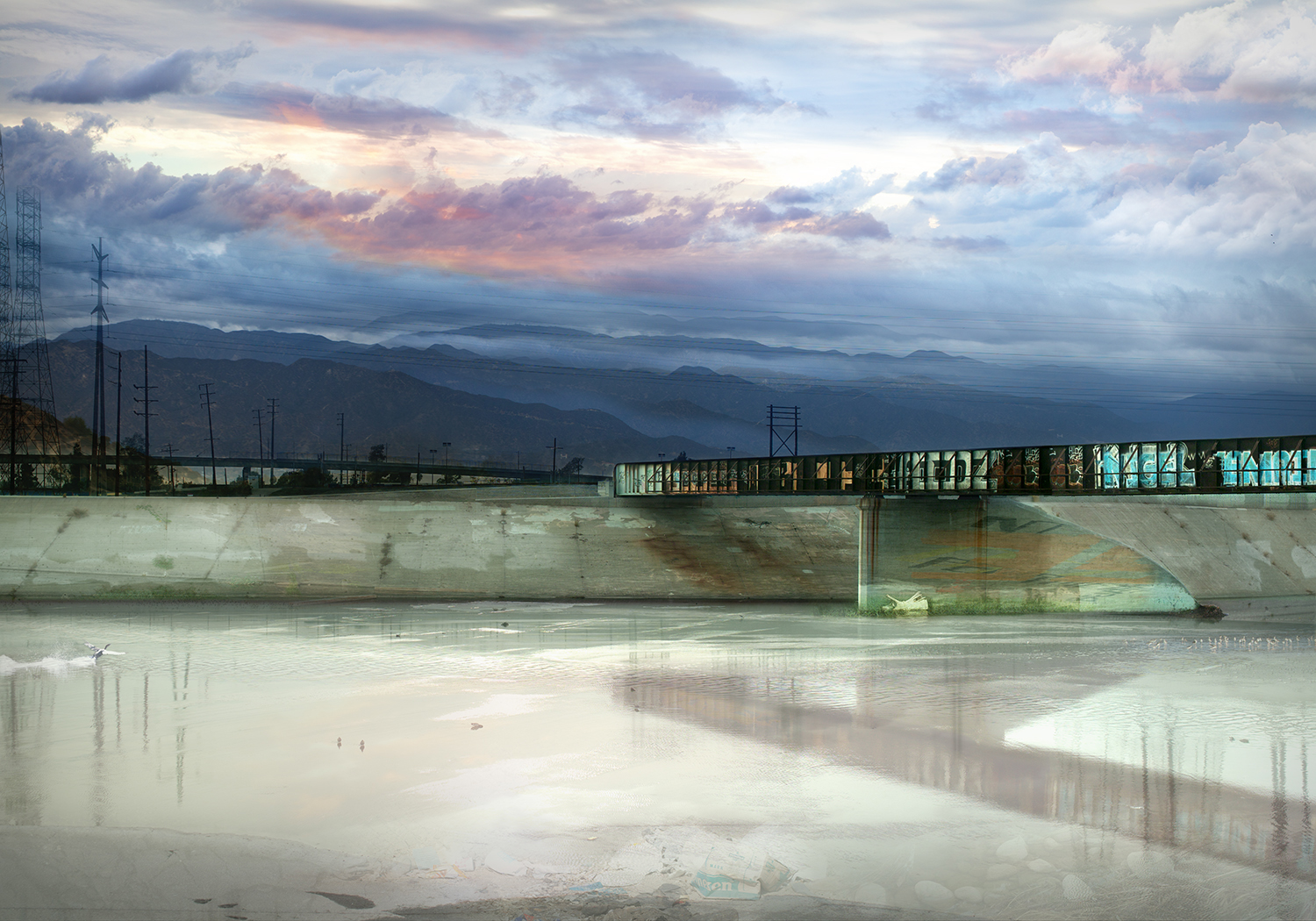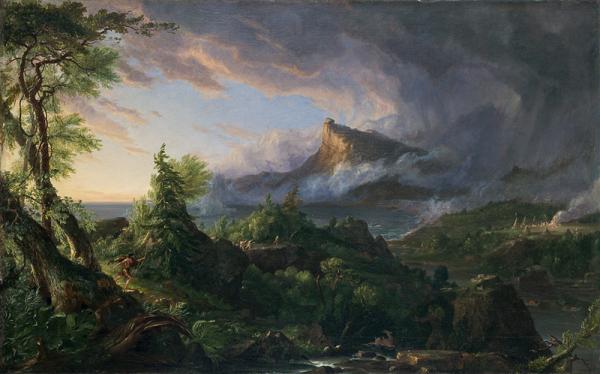Artist Elena Dorfman has been photographing the Los Angeles River of late. We invited her to participate in our Artists Respond series, creating an image inspired by an exhibition at LACMA. Elena chose Nature and the American Vision: The Hudson River School, now on view through June 7, 2015, as her point of departure, and, in particular, Thomas Cole’s painting The Savage State, part of his five-part series, The Course of Empire. The paintings, made between 1833 and 1836, chronicle the rise and fall of an imaginary city, and serve as an allegory for the cyclical progression of civilization from a state of barbarism through advanced social and cultural development, and eventual descent into ruin.
Elena's response to the painting took the form of the photograph below, Bell Avenue, 2014, from her series LA, River (click to view larger).

In the interview below, Elena talked about what inspired her in the Cole painting, and described her process in approaching the Los Angeles River. Like the Hudson River School painters, Dorfman creates pictures that appear, at first glance, to represent the landscape, and yet, upon closer inspection, have been constructed by the artist from scenes both real and imagined.
Elena Dorfman: I chose Thomas Cole's The Savage State because it most resonated with the series of photographs I’ve been making on the Los Angeles River. I was drawn to the themes of discovery, exploration, and settlement along the water referenced in Cole’s painting. Similar themes pertain to the history of early settlement along the L.A. river. Without the river, this city would not be what it is today. Also, there are so many visuals in the landscape I experience along the L.A. River that I found to be in concert with the Hudson River School paintings: the water, the light, the mountains, the tension inherent in the scene. Even the title, The Savage State, represents Los Angeles to me.
The river today is a scene of birth and renewal and also destruction and barbarism. While I walk along the river, I’m constantly thinking about what this city must have looked like when it was farmlands and orchards, what has become of the river over time, what man has done to nature and, in return, what nature is doing to man. The river is regenerating and renewing and, in some places, defying its concrete mantle.
I’ve walked along the river over the course of years, gathering images, and then I reconstruct them, condensing time. I’m making individual pictures that contain dozens—if not hundreds—of photographs, which, ultimately represent multiple days, seasons, moments. It’s a collage of time, place, and various elements that I encounter and choose to include. In most of my constructs, I try to keep the river landscapes intact, but the final mix is influenced by many things, the romantics and the surrealists first and foremost.
The original setting of this picture is near Long Beach, though I can say this image is made up of at least a dozen different shoots made beforehand in multiple locations. Although my images are manipulated, I try very hard to make them as seamless and realistic as possible, with the tension between fact and fiction ever present.
In the minds of many residents of Los Angeles, the river is really a glorified sewer. Yet the drama and revitalization and growth along the river draw me to it again and again, inspiring me to make images that reference my visual experiences. It can be a dangerous place. This photograph depicts some sense of that, with the drama in the sky. My hope is that this picture also triggers a sense of time in the viewer—the river as it once was and now is.
The water plays a major role. It’s my take on God. I don’t believe in God, but here the water represents the divine in nature. The glassiness of the water is a surface that not only mirrors the sublime beauty of this urban environment but also allows access to what’s roiling beneath: torment, conflict, and the barbarism that took place during the early days of the river. It’s also a violent place today.
The Savage State portrays people, but my response to this landscape does not. There are the traces and trappings of humanity, but no one person is visible. In this picture the graffiti is the stand in. It marks both time and place for those who came before, and those who will follow the river. When I encounter taggers on the river, which is often, we circle each other and try not to look at what the other is doing. We respect each other’s territory.
Along the edges of my image the poles are in direct reference to the trees in the Cole painting. The power lines flank the entire river. They are ubiquitous and appear in nearly every image I have taken. I can’t consider the river without including the mountains that flank it, so they play an important role in response to the Cole painting, too. To me, The Savage State conveys a sense of circularity, movement, and drama that I was also hoping to convey in my image.
In this series as well as my last, I frequently reference the Hudson River School painters and their use of light, and drama, the juxtaposition of various elements, and the sense of renewal and chaos in their pictures. I respond to their provocation, their aesthetic choices.
Making a picture in reference to another picture challenged me. It provided a boundary for me to work within; when you’re dealing with tens of thousands of images, it’s often difficult to find the boundary. In a way less was more. By sticking to the reference point of The Savage State, it made working toward this picture more urgent, more poignant.
Dorfman will be showing work in the spring at Modernism Gallery in San Francisco.



